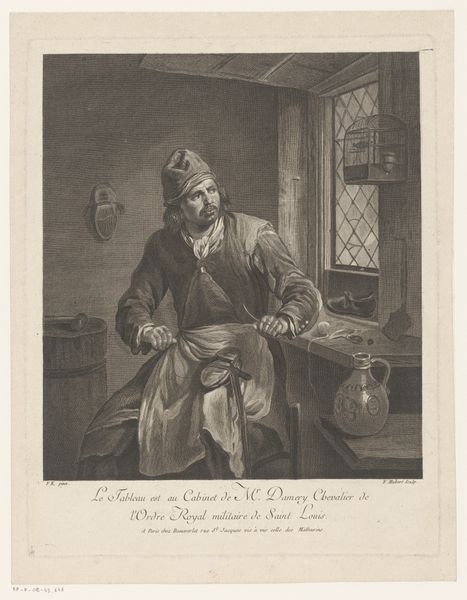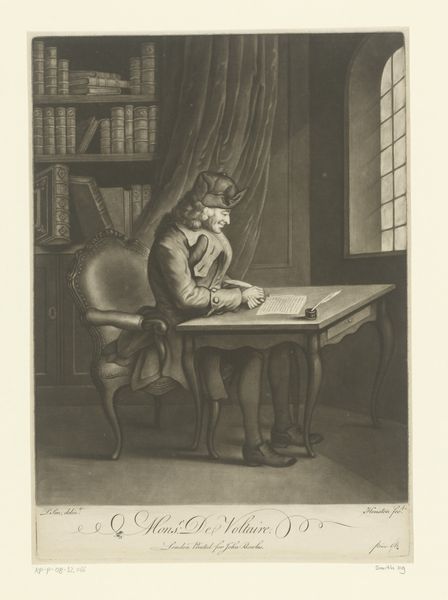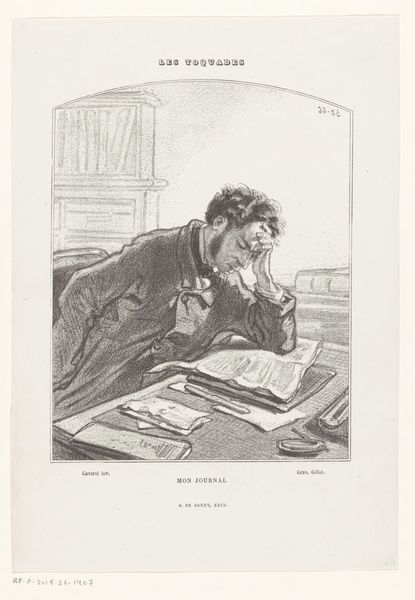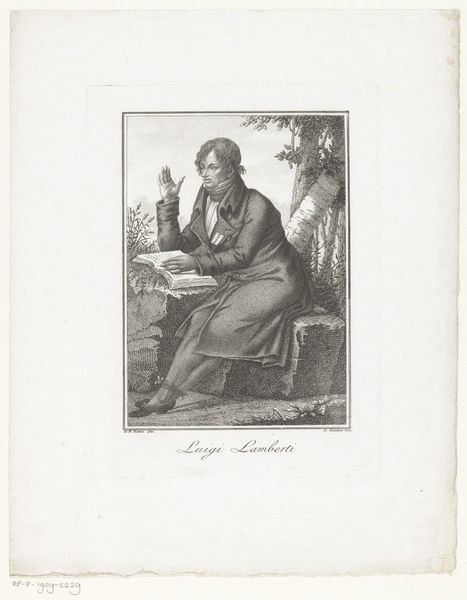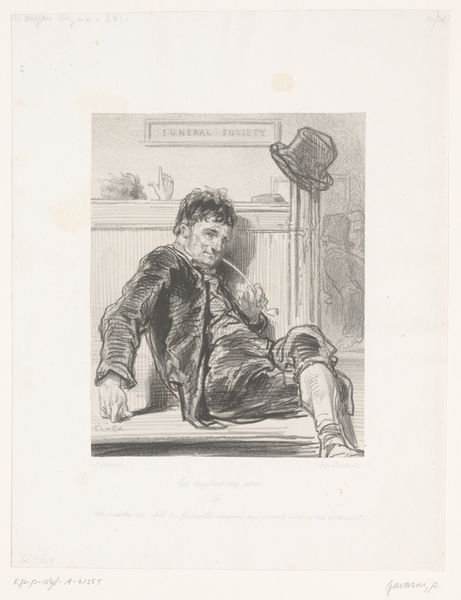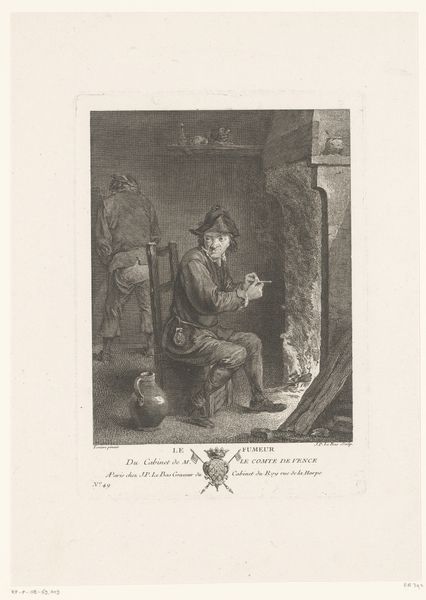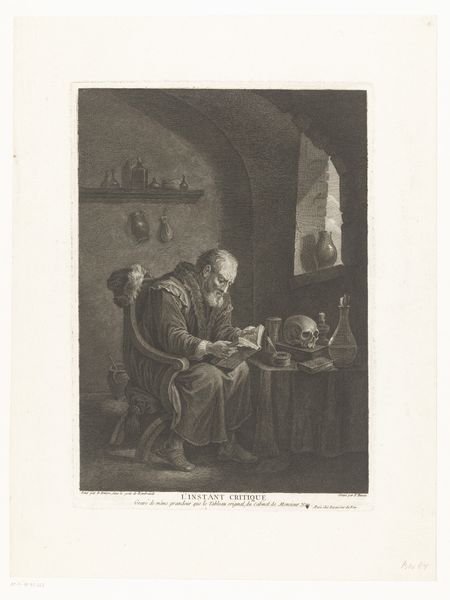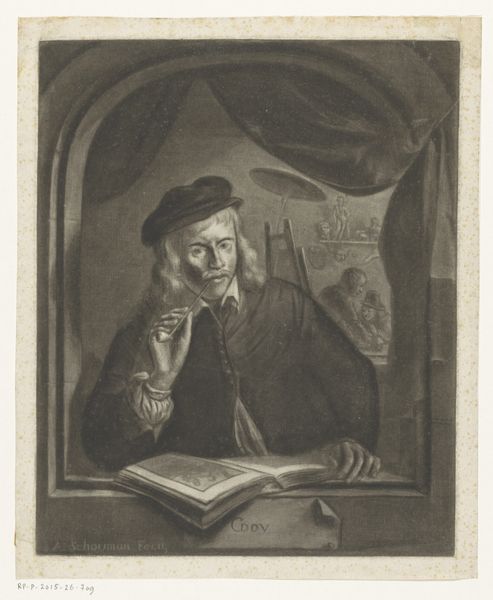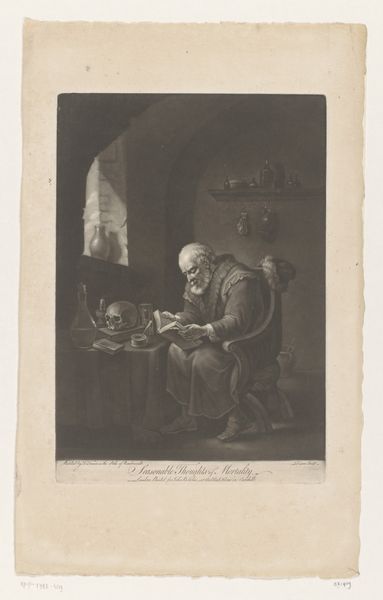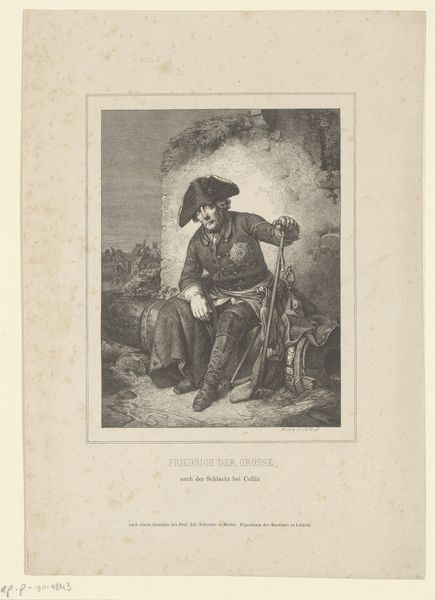
Dimensions: height 277 mm, width 213 mm
Copyright: Rijks Museum: Open Domain
Curator: Pierre François Basan's "Man met rookgerei," created sometime between 1739 and 1797, presents a snapshot of daily life rendered with impressive detail in print. What are your initial thoughts on it? Editor: The aging of the print is palpable. There's a kind of rustic, quiet charm in its worn tones and careful depiction. The subject, seemingly engrossed in his pipe, sits in a small domestic scene bathed in diffused light from the nearby window. Curator: Indeed. The artist's deployment of shadow and light, or chiaroscuro, defines form and creates depth. Consider the composition – the subject positioned near the window is no accident; the window operates like a framed picture, nesting our sitter's image inside the work. Editor: That positioning underscores a particular vision of domesticity, placing emphasis on simple pleasures such as tobacco within a circumscribed space. It also reminds us how art often represents ordinary life. Given that tobacco held social significance then, how might his pipe operate as a visual marker of identity or belonging? Curator: Excellent point. We must look closely at the way in which Basan uses formal techniques, for instance, consider the detailing on the man’s face which appears almost photographic, or how his hat directs our gaze. Also, notice the details near the window, almost inviting us to look outward. These devices give weight to the figure while enmeshing him in space and context. Editor: These visual cues tell us that tobacco culture, embedded as it was in society at the time, likely played a crucial role in self-presentation. One must then ask, does the work naturalize particular social rituals through depictions that are inherently coded? Curator: Through its textures, careful detailing and construction, the print offers an intimate perspective—rendering personal contentments public—ascribing dignity and complexity to the every-day through precise control of tonal variations and lines. Editor: Thinking about audience then—its reproduction through prints made such imagery accessible beyond elite circles, shaping visual cultures around ideas of contentment that have material and political resonance. That's quite remarkable. Curator: Absolutely, that allows us to re-examine how a work can, through deliberate, formal construction, mediate, complicate, and reflect societal conditions of its time. Editor: Agreed. Analyzing both the artistic treatment and its socio-historical dimensions provides a more enriched understanding about this snapshot of contentment and its continuing relevance.
Comments
No comments
Be the first to comment and join the conversation on the ultimate creative platform.
